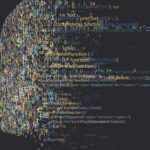
Accessing public benefits has never been easy for low-income people in the United States. But now digital platforms, automated interfaces, and algorithmic verification systems are adding to what Ray Suarez had aptly described in NPQ years ago as a system predicated on administrative burden.
In short, as public services become increasingly digitized, new forms of structural exclusion are emerging. The people most affected are individuals without stable internet access, up-to-date devices, digital literacy, or the time or support to navigate systems that do not speak their language.
As public services become increasingly digitized, those without connectivity are systematically excluded from critical resources: food assistance, healthcare, housing support, education, and civic participation. This makes the work of digital advocates increasingly critical.
Systemic Digital Exclusion
Angela Siefer is executive director of the National Digital Inclusion Alliance (NDIA), a nonprofit dedicated to advancing digital equity and inclusion. As Siefer told NPQ, “The digitization of public services has definitely deepened preexisting structural inequalities.”
As public services become increasingly digitized, new forms of structural exclusion are emerging.
Food stamps or SNAP (Supplemental Nutrition Assistance Program) was among the programs most starkly cut in the July 2025 budget and tax bill passed by Congress.
Digital exclusion only deepens the wounds. In SNAP, this takes the form of facial recognition systems that exclude groups based on biased software programming—disproportionately people of color—without offering human alternatives. “There is no avenue of redress if they don’t consider you eligible; it’s really cruel,” Siefer explained.
Siefer underscores the importance of human relationships in ensuring meaningful access to public services. “It is trusted humans in your community that you have a relationship with that goes beyond the technology and goes beyond a particular service that’s in front of you,” she explained.
Tasks like uploading documents, scanning IDs, or deciphering bureaucratic language are far from neutral.
Gina Plata-Nino, deputy director for SNAP at the Food Research & Action Center (FRAC), concurred, adding that “for most low-income people, the phone is their only mode of access.” She emphasizes that the significant technology access gap is driven by multiple factors, including often-inadequate access to information in the beneficiary’s native tongue.
The most affected populations vary, as not all groups face the same conditions. “We’ve observed that older adults and individuals experiencing homelessness are the ones who face the most significant digital barriers. Beyond that, other groups are also impacted, although their circumstances may differ considerably,” said Plata-Nino.
These feelings of exclusion and dependence are not only emotional—they are embedded in the very mechanics of digital systems. Beyond technical design, the process itself is riddled with barriers. “If I have to put in a new password every single time I log in, I’m going to get frustrated,” she explained. Tasks like uploading documents, scanning IDs, or deciphering bureaucratic language are far from neutral. They demand time, digital literacy, and reliable support—resources that many simply do not have. The result is a system that, rather than empowering, often reinforces vulnerability.
The consequences of digital exclusion extend to many programs beyond SNAP. Similar patterns emerge across Medicaid and Medicare, where online enrollment systems often alienate older adults and people with disabilities.
During the pandemic, state unemployment insurance systems collapsed under digital demand, excluding those without devices or digital literacy. Even the FAFSA (Free Application for Federal Student Aid) has become inaccessible for students in rural areas or from transient families.
These examples underscore the systemic issue: When digital transformation is not accompanied by inclusive design, public services risk reinforcing the very inequalities they aim to address.
Policy Goes in the Wrong Direction
Back in 2021, the infrastructure bill passed during the Joe Biden administration included a provision called the Digital Equity Act, which, as a New York Times article explained, aimed “to improve high-speed internet access in communities with poor access.” The article added that the bill “was written to help many different groups, including veterans, older people and disabled and rural communities.
The retreat from this policy, however, began in 2024, when Biden was still president, with the dismantling of the Affordable Connectivity Program, which until June 2024 had provided monthly internet service subsidies to over 23 million low-income households.
This erosion of access was compounded on May 9, 2025, when President Donald Trump moved to end the Digital Equity Act grant programs, an action that has already spurred a lawsuit by 22 state attorneys general.
Greta Byrum, an expert in digital equity, community technology, and urban resilience who led the development of digital equity plans under the Digital Equity Act, pointed out to NPQ that a decade of work by NDIA and other organizations has shown that when public benefits go digital, people without internet access or digital face greater obstacles.
Byrum further noted that people seeking services now “face a new problem created by artificial intelligence.” Byrum expressed deep concern about the growing role of artificial intelligence in public administration, describing it as a dangerous acceleration of existing problems. “Now we have a layer of the administrative state that’s conducted using AI, which is going to make these problems a million times worse,” she warned. In her view, companies like Palantir, working alongside agencies like the US Department of Justice, are not simply modernizing systems—they are dismantling the administrative state, extracting personal data, and monetizing it.
Digital equity is not just a technical challenge, but a social commitment rooted in care and collective responsibility.
The Value of Connection
Norma Fernandez is CEO of EveryoneOn, a US-based nonprofit that aims to close the digital divide. “We know SNAP will require an email address and online application. My mother, who is elderly, can’t do it alone. I have to help her every year,” she said. This dependency breeds shame, frustration, and a sense of exclusion. “People feel vulnerable, lost, excluded. As if the government doesn’t want them to access the information,” Fernandez added.
Since 2020, EveryoneOn reports that it has provided direct digital training to over 6,000 individuals to help close the divide. But it is not enough.
The challenges are evident in the conversations that Fernandez and her team have with program participants. She noted that many training participants express not only frustration but a profound sense of disorientation. “I think they would say they feel excluded, and I think they would say that they feel lost also. “
“They felt a sense of shame that they didn’t know how to use their smartphone, that they didn’t know how to hop onto Zoom, that they didn’t know how to do email,” she explained.
These human emotional responses underscore a critical point in addressing the digital divide. As organizations and digital equity advocates have warned, digital equity is not just about connecting households—it’s about ensuring that connection is meaningful, secure, and supported by human alternatives.
Advocates agree that progress is made when people help one another navigate systems that were never built with inclusion in mind. In this light, digital equity is not just a technical challenge, but a social commitment rooted in care and collective responsibility.
When considering alternatives to improve accessibility, the advocates interviewed for this story agreed that preserving human-led assistance within public service systems is not simply an operational detail—it is a fundamental imperative.
The convergence of these voices reveals a deeper truth often overlooked in policy and design: Technology, no matter how advanced, cannot substitute the relational, adaptive, and empathetic functions of human support. The digital divide is not simply a matter of infrastructure or access—it is a lived experience shaped by trust, guidance, and community.














